The highlight of the exhibition “The History of Earth’s Formation Through the Collection of Fossils” is the oldest stone in Vietnam, dating back nearly 3 billion years.
The Hanoi Museum is hosting the opening of several thematic exhibitions: Giảng Võ School and the Collection of Weapons from the Lê Dynasty; The History of Earth’s Formation Through the Collection of Fossils; and The Essence of Vietnamese Craft Villages Through the Lens of Contemporary Interior Design.
Thematic Exhibition The History of Earth’s Formation Through the Collection of Fossils is organized in collaboration with the Hanoi Fossil Museum.
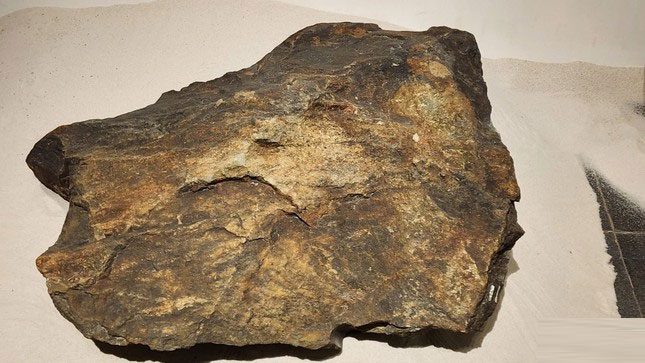
The oldest stone in Vietnam, dated at 2.936 billion years.
The Hanoi Fossil Museum currently possesses an extensive collection of thousands of valuable documents and over 15,000 fossil specimens collected from many locations around the world and within Vietnam, dating back millions to billions of years.
Most of these specimens have been certified as relics and antiques by the Hanoi Department of Culture and Sports. They possess significant historical and scientific value, helping to recreate an ancient paleoenvironment—traces of ancient life—thereby creating a space for paleontology and fossil enthusiasts from all directions.
The exhibition content is an intersection of science, history, nature, and art as visitors can contemplate films, enjoy paintings, and especially examine fossil specimens that are hundreds of millions of years old.
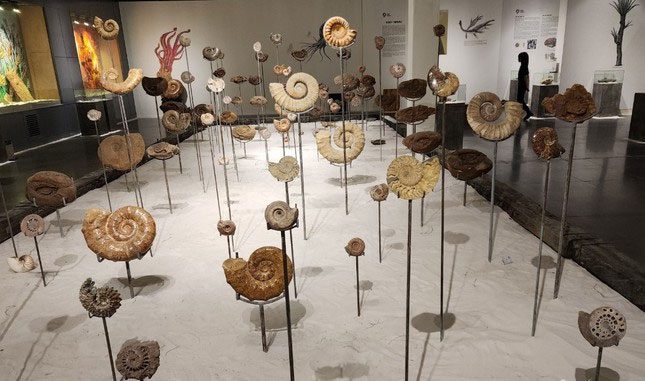
Fossil specimens displayed as installation art.
In this exhibition, the standout item that captures the audience’s attention is the oldest stone in Vietnam, dated at 2.936 billion years.
According to documentation, in 2001, Assoc. Prof. Dr. Trần Ngọc Nam—former head of the Geography-Geology Department at Hue University—had the opportunity to visit the Hưng Khánh waterfall area (Trấn Yên District, Yên Bái Province), located in the Con Voi mountain range, to collect samples. The zircon crystals taken from the orthogneiss layer at that location were brought to a modern laboratory in Japan for absolute dating. The analysis results indicated that the rock there is dated at 2.936 billion years, belonging to the Mesoarchaean era—the oldest rock age on present-day Vietnamese territory.
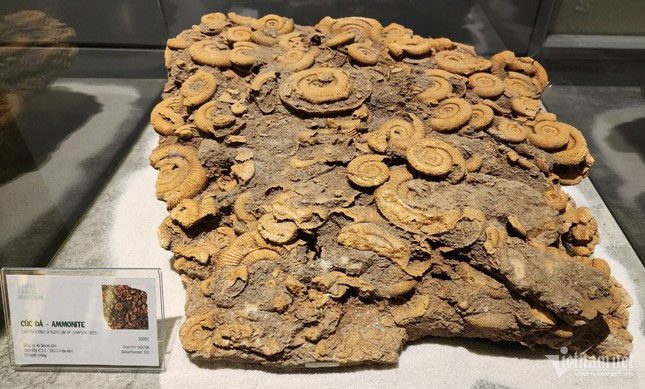
Amber fossil.
In addition to the displayed fossil specimens, the Hanoi Fossil Museum has also designed a 3D Mapping space that describes the history of Earth’s formation using virtual reality 3D technology.
3D Mapping is a technique that uses light to create interactive visual blocks in three-dimensional space, representing one of the most modern and advanced forms of art today. Under the 3D effect, images come alive in three-dimensional space, captivating the audience.
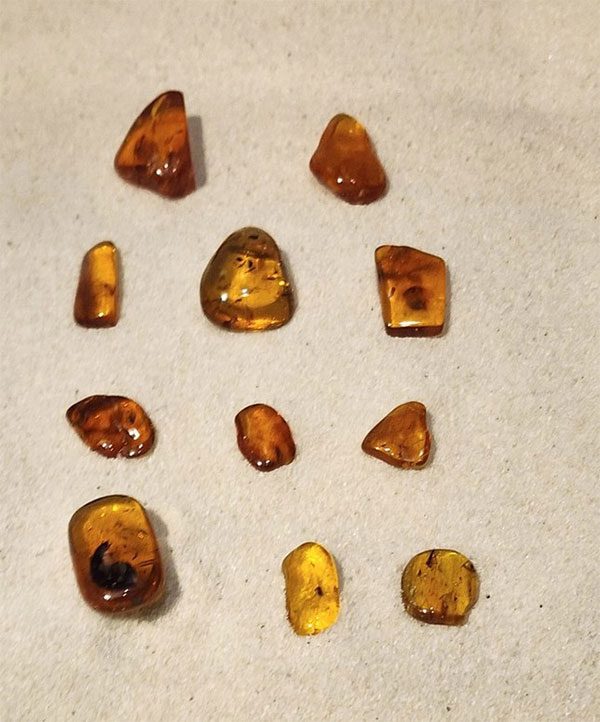
Fossilized amber.
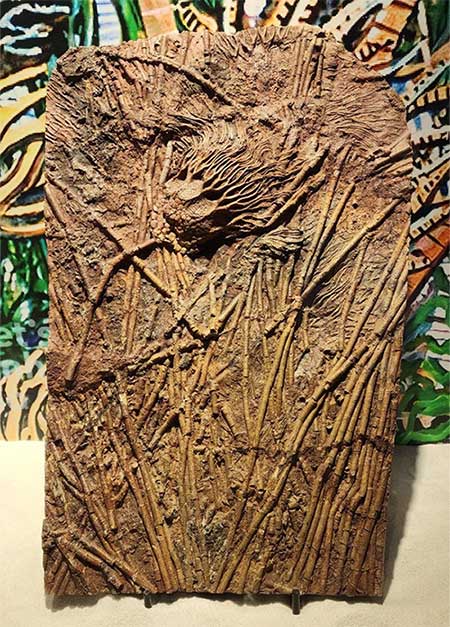
Fossil of “Sea Lily” dating back 488 million years.
Thematic Exhibition Giảng Võ School and the Collection of Weapons from the Lê Dynasty introduces more than 200 artifacts, images, and documents about Giảng Võ School, which trained military officials and soldiers for the court, as well as various types of weapons from the Lê Dynasty; thus educating a sense of patriotism and national pride among the youth.
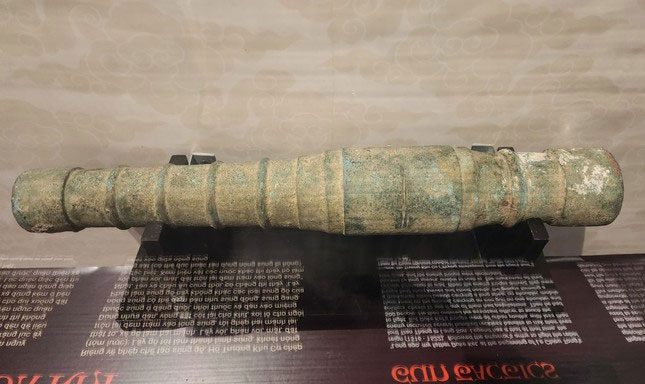
This exhibition is an opportunity for the Hanoi Museum to showcase the Ngọc Khánh weapon collection, which includes 111 artifacts recognized by the Prime Minister as National Treasures in Decision No. 41/QĐ-TTg (11th batch, 2022).
The exhibition The Essence of Vietnamese Craft Villages Through the Lens of Contemporary Interior Design presents 10 representative craft villages in Hanoi, including: Định Công silver soybean village, Khoái Nội embroidery, Phú Vinh bamboo and rattan weaving, Nhân Hiền sculpture, Chuôn Ngọ mother-of-pearl inlay, Thiết Úng wood carving, Thụy Ứng horn combs, Bát Tràng ceramics, Vạn Phúc silk, and Hàng Trống folk paintings.
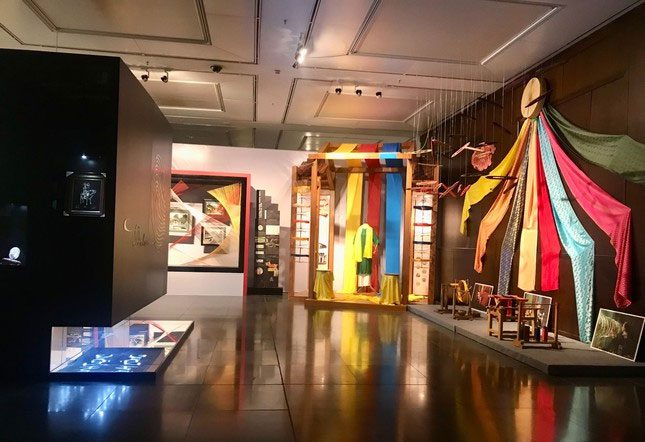
Exhibition of the Essence of Vietnamese Craft Villages Through the Lens of Contemporary Interior Design.
This exhibition showcases the creative design perspectives of a group of students from 9 universities in Vietnam, including: Hanoi Open University, Vietnam Forestry University, Duy Tan University, Nguyễn Tất Thành University, Hanoi University of Civil Engineering, Hanoi Architecture University, Yersin University in Da Lat, Industrial Fine Arts University, Da Nang University of Architecture, and King Mongkut’s University of Technology North Bangkok in Thailand.


















































